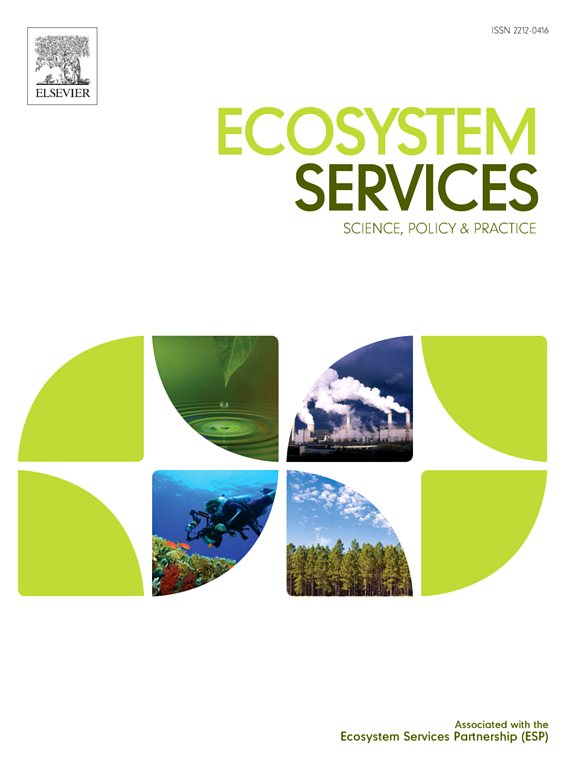Nature-based solutions for urban challenges: A simple framework based on ecosystem services for a World Heritage City
IF 6.6
2区 环境科学与生态学
Q1 ECOLOGY
引用次数: 0
Abstract
Urban nature projects are becoming increasingly common in cities as they contribute to reducing the impacts of the climate crisis. In this study, we developed a conceptual framework based on ecosystem services (ESs) to analyse how urban naturalisation actions (nature-based solutions, NBSs) included in urban nature projects contribute to multifunctionality. Here, multifunctionality refers to the capacity to generate multiple simultaneous ESs, indicating the extent to which the challenges identified in a city have been addressed. A multi-criteria analysis based on socioeconomic and environmental criteria, assessed using a series of descriptors linked to ESs, was used to develop a Multifunctionality Nature Project (MuNaP) index. The framework identifies the level of multifunctionality of NBSs and incorporates information for its improvement, if necessary. To validate this proposal, we calculated the multifunctionality of an urban nature project in the World Heritage City of Salamanca, Spain. Among all NBSs used in the project, tree planting was the most multifunctional, whereas the creation of bioretention sites was the least multifunctional. Increasing the values of certain criteria, such as diversity and origins, increased the multifunctionality of the urban nature project. Finally, the MuNaP index has a minimum value that ensures the multifunctionality of an urban nature project, that is, its contributions to biodiversity conservation, provision of multiple ESs, and the well-being of citizens.
基于自然的城市挑战解决方案:基于世界遗产城市生态系统服务的简单框架
城市自然项目在城市中变得越来越普遍,因为它们有助于减少气候危机的影响。在本研究中,我们开发了一个基于生态系统服务(ESs)的概念框架,以分析城市自然项目中包含的城市自然化行动(基于自然的解决方案,nbs)如何促进多功能性。这里,多功能性指的是同时产生多个ESs的能力,这表明城市中确定的挑战已经得到解决的程度。基于社会经济和环境标准的多标准分析,使用一系列与ESs相关的描述符进行评估,用于开发多功能自然项目(MuNaP)指数。该框架确定了nbs的多功能性水平,并在必要时纳入了用于改进的信息。为了验证这一建议,我们计算了西班牙萨拉曼卡世界遗产城市自然项目的多功能性。在项目中使用的所有nbs中,植树是最多功能的,而生物保留点的创建是最不多功能的。增加某些标准的价值,如多样性和起源,增加了城市自然项目的多功能性。最后,MuNaP指数有一个最小值,以确保城市自然项目的多功能性,即其对生物多样性保护、提供多种生态环境和公民福祉的贡献。
本文章由计算机程序翻译,如有差异,请以英文原文为准。
求助全文
约1分钟内获得全文
求助全文
来源期刊

Ecosystem Services
ECOLOGYENVIRONMENTAL SCIENCES&-ENVIRONMENTAL SCIENCES
CiteScore
14.90
自引率
7.90%
发文量
109
期刊介绍:
Ecosystem Services is an international, interdisciplinary journal that is associated with the Ecosystem Services Partnership (ESP). The journal is dedicated to exploring the science, policy, and practice related to ecosystem services, which are the various ways in which ecosystems contribute to human well-being, both directly and indirectly.
Ecosystem Services contributes to the broader goal of ensuring that the benefits of ecosystems are recognized, valued, and sustainably managed for the well-being of current and future generations. The journal serves as a platform for scholars, practitioners, policymakers, and other stakeholders to share their findings and insights, fostering collaboration and innovation in the field of ecosystem services.
 求助内容:
求助内容: 应助结果提醒方式:
应助结果提醒方式:


